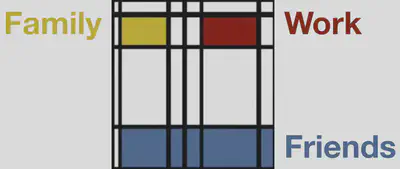Context Aware Art

We consider how artwork can be digitally context aware, considering context awareness from both phenomenological and computational epistemologies. Considering from a phenomenological perspective the theory of experience. Including how perception can be seen in a manifold perspective, in which consciousness and intentionality is the source of artefacts and experience. Furthermore, from a computational perspective we consider moving beyond traditional representational perspectives of perception. So, considering subjective experiences, rather than copying characteristics of experience. Adopting consciousness in its intentionality, the direction of consciousness to something, as a counterpoint to representational formulations of perception. We then consider creating context aware art, in which interactions through an interface are to experience, perceive and inhabit virtual environments. So, serving as a gateway to the mental processing involved in the interpretation of informational contents. Therefore, the interface as a medium of interaction must be based upon constantly reforming spatial configurations. Thereby forming a congruence of the interaction between the individual and the virtual environment, based on the exchange of stimuli between users and cognition, via the interface. This allows for better acquisition of context, the abstraction and understanding of context, and behaviour based on context recognition.
Considering an example in which contexts of social media are linked to a dynamic interpretation of Mondrian’s Composition II.
Mondrian believed that colours should be kept separate and pure. He uses only black and white and the primary colours of red, yellow and blue.
According to Mondrian colour has vibrations in the same way as music, which gives them a sense of movement when you look at them. So, different colours have different personalities.
In social media, context awareness is a construction of societies based on reality, and should therefore be aware of the history and context surrounding social interactions. We therefore link areas of activity to colour, and relative intensity of activity to form. So, creating a live piece of artwork, potentially enriching to the soul, as well as informative of online social experiences. We could therefore imagine the following video showing social media interactions accelerated over a day (modified from Bauhaus Movement: